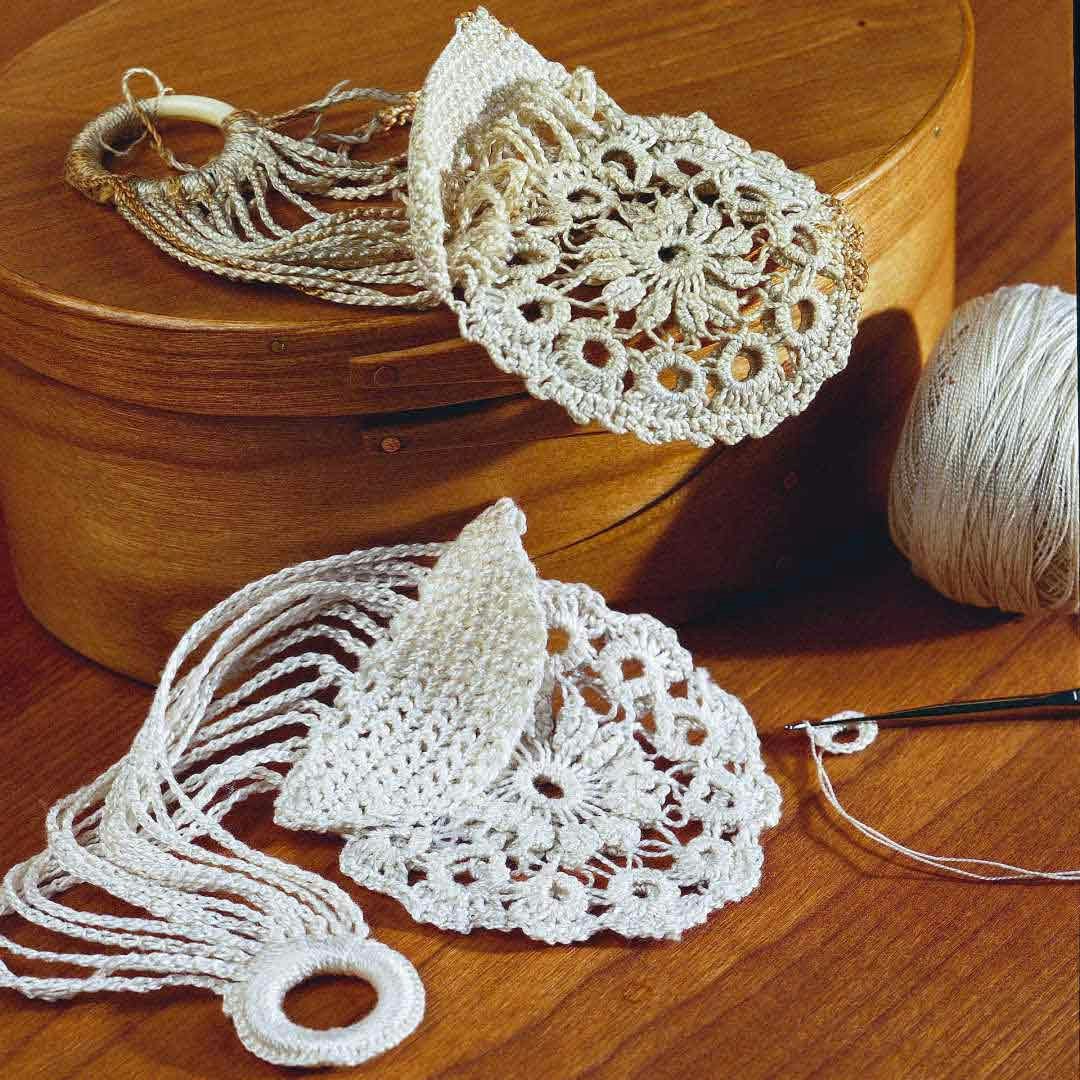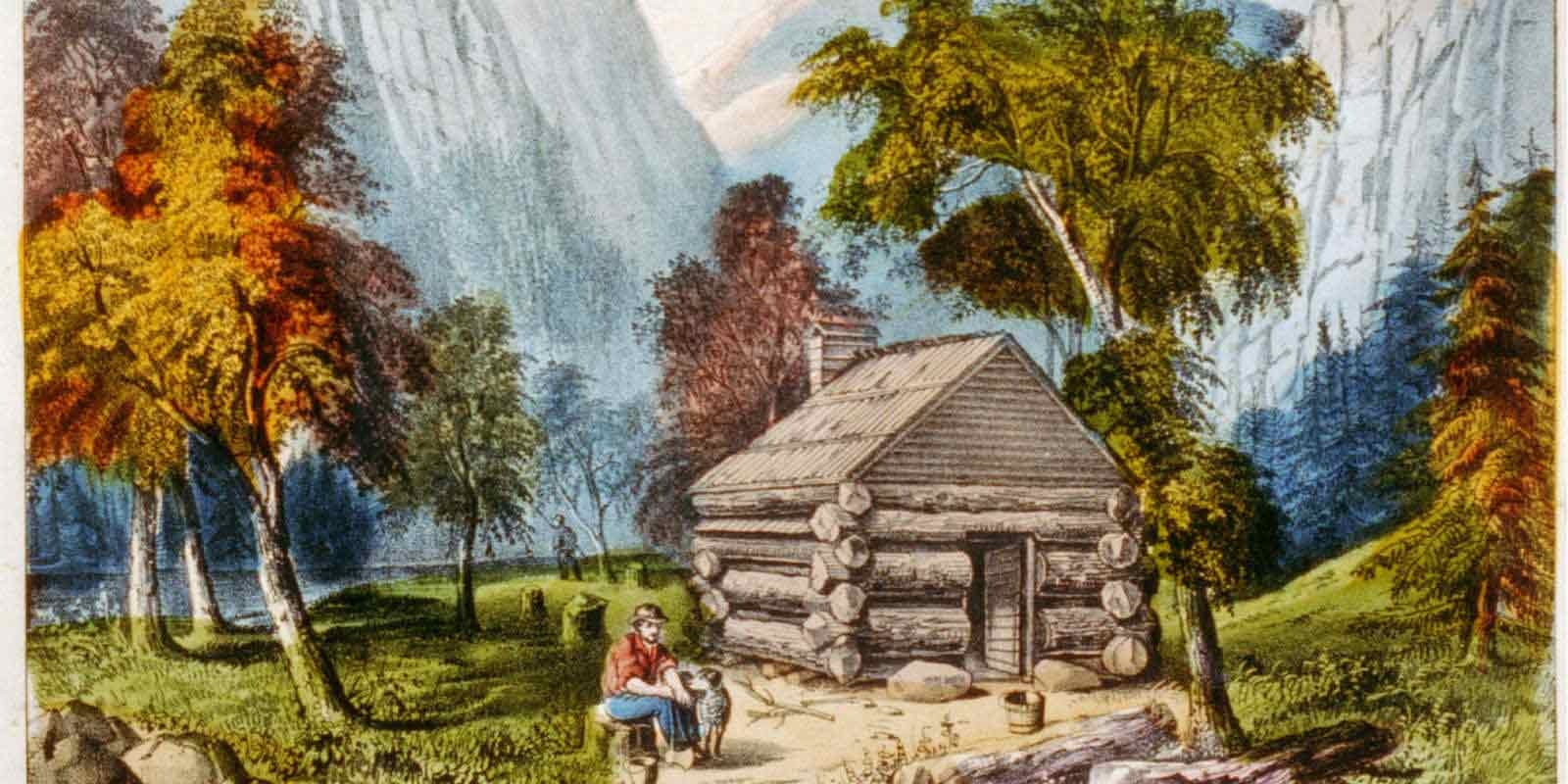When I first found myself on lockdown in my home with my husband and 3 year old, my thoughts invariably went to one of my favorite childhood books: Little House in the Big Woods by Laura Ingalls Wilder. In that first book of her “Little House” series, Laura and her family lived in a solitude similar to, but truly oh-so-very different from, what we’re experiencing now. Like many of us, they filled their days with cooking, chores, work, and textile work of one kind or another. Ma and the girls sewed and embroidered, alone in their home, carefully mending clothes and creating small items of beauty, just as I spend my free time playing with thread and yarn.
Of course, the isolation that homesteaders experienced was a world of difference from what so many of us are experiencing today. The Homestead Act offered up 160 acres of “unoccupied” land to those willing to settle in the far-flung reaches of the Midwest and West. While many homesteaders were bachelors, there were also many families and even some widows and single women. (Married women were, of course, not eligible.) Many of the claims were in remote areas far from settled towns, so families might go weeks or even months without seeing anyone who didn’t live in their home. This was especially true for women who were expected to stay home to keep the household running while men could take trips for days or even weeks on end.
Along with many, many responsibilities around the house and farm, homesteader women were expected to know how to embroider, to sew and mend all manner of textiles, and to teach their daughters those same skills. Some women would also knit, crochet, and/or weave. These skills were all vital as ready-made textiles were not always easily available in isolated areas, so if a shirt needed mending or a pair of stockings became too small, it was up to the women to fix the problem. Almost every textile the family used was handcrafted by the women in the family. Handwork was work done out of necessity, for sure, but it also provided many of these women with a creative outlet and a way to add bits of beauty to their lives through lace edgings and embroidery on petticoats, carefully pieced quilts, and other items both utilitarian and frivolous.

Jennie Mae’s tatted and crocheted fancy bag (above) photographed with a modern replica. Photo Credit: Joe Coca
In the article “The Claim Life of Jenny Mae Olson: Fine Needlework on a Homestead in North Dakota,” from the March/April 1999 Piecework, author Jude Daurelle writes of a woman who spent much of her free time creating beautiful works out of thread as she embroidered, crocheted lace, and quilted using whatever supplies she could get her hands on. Entries in her diary reveal a life full of hard work, chores, and handwork on items necessary (mending undergarments, for example) and mostly aesthetic, as in a beautiful tatted and crocheted “fancy bag.” The fancy bag was so lovingly created and so carefully done—this was work done for the joy of it.
Some items created were designed to be both useful and beautiful—especially quilts. Each scrap of cloth used on the homestead was precious, and as fabrics slowly wore out, quilts were ideal ways to repurpose these scraps into something hardy and useful. In her article from the July/August 2016 PieceWork, Nancy Polityka Bush writes of the hardship of pioneer women and of the usefulness of quilts. On the long journey to the homestead, quilts were seen as more than blankets—they were used as seat cushions, shawls, picnic blankets, and more. Once folks settled and a home was built, quilts might line the walls to keep out the cold and add a bit of color. Bush quotes one woman as writing, “We made them (quilts) as fast as we could so our families wouldn’t freeze, and as beautiful as we could so our hearts wouldn’t break.”

Ostebånds such as this one made by Oline Nilsdotter Øverland in the mid-twentieth century were wrapped around cheese and secured with a coordinating pushpin. Photo credit: Courtesy of the Vest-Telemark Museum
Immigrant women on homesteads used handwork not just to as a creative outlet and a way to take care of their families, but to also maintain a link with their heritage. According to Laurann Gilbertson, chief curator of the Vesterheim Norwegian-American Museum, Norwegian settlers especially loved to create items that were “a joy and pleasure to use.” Textiles were usually handwoven, and many were also embroidered. (My personal favorite Norwegian textile is the ostebånd, an embroidered band that would be wrapped around cheese and secured with a coordinating pushpin.) While these women were sometimes miles and miles from the nearest town—and thousands of miles from their country of birth—they still strove to surround themselves with beautiful cloth.
Today, as I find myself sequestered in my own home, I am not so isolated as those early homesteaders. I have my phone, the Internet, and the ability to wave to my neighbor over the fence as he works in his yard and I in mine. What I do have in common with these women is the way we both use our handwork as an outlet, and I know I’m not alone in finding myself drawn toward fiber as I deal with my stress and anxiety at my loom. We are connected through the years and through the threads we work in solitude.
Christina
Resources
Bush, Nancy. “Making a Home on the Range and Elsewhere on the Pioneer Trail.” Piecework, July/August 2016, 16–20.
Daurelle, Jude. “The Claim Life of Jenny Mae Olsen: Fine Needlework on a Homestead in North Dakota.” Piecework, March/April 1999, 16–20.
Garton, Christina. “A Joy and a Pleasure to Use.” Handwoven, September/October 2019, 58–59.
Strawn, Susan M. Knitting America: A Glorious Heritage from Warm Socks to High Art. Beverly, Massachusetts: Voyageur Press, 2011.

